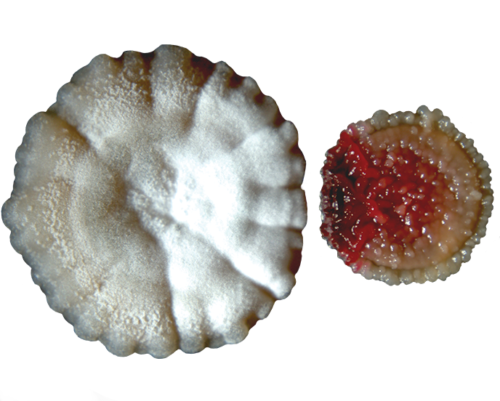Antibiotics are potent drugs used to combat bacterial infections, saving countless lives and revolutionizing modern medicine. Most people are surprised to hear that nearly all antimicrobials—a broader term that encompasses antibiotics, antifungals, antiparasitics, and antivirals—were discovered in plants, fungi, and bacteria. One major source of naturally occurring antimicrobials is a genus of soil-dwelling bacteria called Streptomyces.
Assistant Professor of Plant and Microbial Biology, Matthew Traxler, is investigating the ecological context of Streptomyces antimicrobial production to try to better understand when, how, and why Streptomyces produce antimicrobials. Traxler’s work shows that Streptomyces produce a diversified suite of chemicals, including known antimicrobials, when they are grown with other bacteria, as compared to when they are grown alone. Using RNA sequencing and genetic techniques, the Traxler lab has recently identified the genes that Streptomyces use to sense another bacterium and alter the production of antimicrobials. What exactly this system is sensing and how it functions at a molecular level is currently being investigated in the lab.
Understanding what drives Streptomyces to produce antimicrobials has widespread biomedical implications. “If we can understand what motivates these microbes to make these molecules and how that connects to genetic regulation, then all of this opens new doors, potentially, to discovery [of new antimicrobials],” explains Traxler. In this time of rampant antimicrobial resistance, the discovery of new compounds is paramount to combating microbial infections.
 Streptomyces coelicolor (right) produces a deep red pigmented antibiotic when interacting with Streptomyces viridochromogenes (left). Credit: Traxler Lab
Streptomyces coelicolor (right) produces a deep red pigmented antibiotic when interacting with Streptomyces viridochromogenes (left). Credit: Traxler Lab
Bailey Bonet is a graduate student in plant and microbial biology
Design: Mohini Bariya
This article is part of the Fall 2019 issue.




